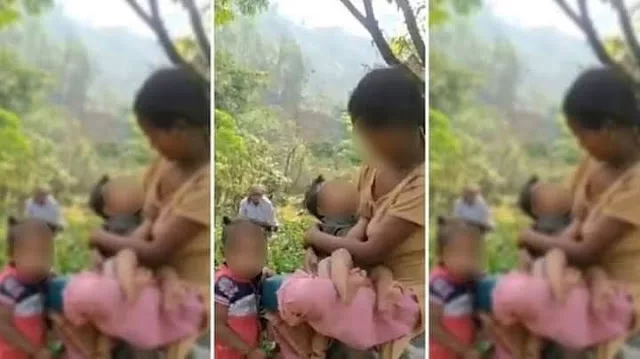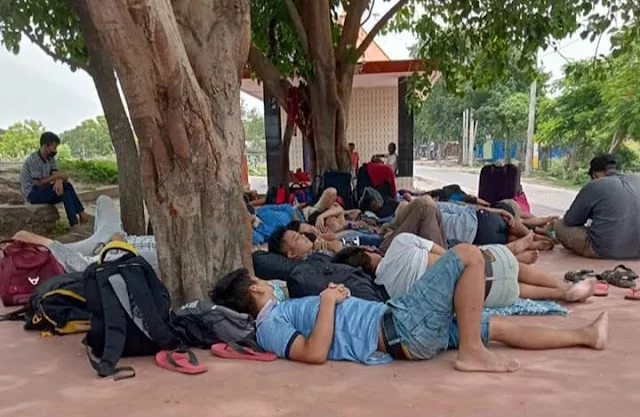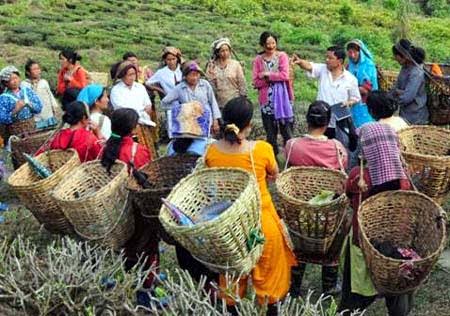I have the first thirty seconds of introduction to a new person, more often than not, well-rehearsed by now. I pronounce my name the way it was intended, receive a blank look, smile and say “Call me Molly.”
They ask, “Are you from Kolkata?”
“No,” I say, “I’m from Siliguri,” *wait for three seconds* “… near Darjeeling.”
At this point, depending on who I am talking to, the response is sometimes, “In Assam?” Sometimes, “I know Siliguri. I went to Sikkim *insert number* of years back,” and once in awhile, “Ah, nice tea.”
On one rare occasion, a then-stranger, who later went on to become a close acquaintance, said, “The tastiest bananas in the Kolkata market come from Siliguri!” That one was new for me, and I haven’t heard it again since.
Living away from home for as long as I have, one realises that in a country like India, people from other parts find it easier to perhaps arrange their cultural imagination by reducing you or your cultural baggage to the closest ‘signifier’. And yet, being a Marathi isn’t as easily reductible to hailing from Mumbai, being a Punjabi to hailing from Chandigarh, or even being Tamilian to be from Chennai. Not the way being Bengali implies hailing from Kolkata. This begs the question of the degrees of cultural hegemony that are at work here, and whether there are political and social implications to it.
Being born and brought up in North Bengal, I know that not only do we speak in a dialect and intonation different from that heard in Kolkata, but we also have a slightly different cuisine, and often, a different set of cultural and political memories. Most Bengalis in North Bengal, for example, carry with them a generational memory of the turbulent 1970s in a way that is not much talked about in cultural representations of the period. Only a few kilometres away from Siliguri is a place called Naxalbari (from which the ‘Naxalite movement’ gets its name), and without knowing the political implications of it, we celebrated Charu Majumdar’s birthday every year in morning assemblies at our convent school. There are many implications of a possible cultural hegemony that the idea of “Kolkata” serves to exercise, but this article tries, in brief, to understand the specific political implications of such hegemony, with reference to the Gorkhaland movement.
 The demand for a separate statehood for the Hills of Darjeeling and the surrounding Tarai region arose in the 1950s. The rising resentment resulted in violent conflict in the mid-1980s, when under the leadership of Subhash Ghising, the militant Gorkha National Liberation Front (GNLF) took charge of the movement. The violence increased, with the use of illegal arms with which the youth in the Hills were politically mobilised, and reached its peak in 1988, at which point the Government of West Bengal conceded in order to come to an agreement with the GNLF through diplomatic talks. This part may be familiar to a few, who have perhaps read the mildly biased account of the movement in Kiran Desai’s The Inheritance of Loss.
The demand for a separate statehood for the Hills of Darjeeling and the surrounding Tarai region arose in the 1950s. The rising resentment resulted in violent conflict in the mid-1980s, when under the leadership of Subhash Ghising, the militant Gorkha National Liberation Front (GNLF) took charge of the movement. The violence increased, with the use of illegal arms with which the youth in the Hills were politically mobilised, and reached its peak in 1988, at which point the Government of West Bengal conceded in order to come to an agreement with the GNLF through diplomatic talks. This part may be familiar to a few, who have perhaps read the mildly biased account of the movement in Kiran Desai’s The Inheritance of Loss.
In 1988, a tripartite agreement between the GNLF, the State government, and the Government of India was signed. The compromise, which allowed the creation of the Darjeeling Gorkha Hill Council (DGHC) and the granting of citizenship to pre-1950 settlers, worked for two decades, but the demand for a separate state continued.
This resentment has huge political implications on the development of the entire region. The GNLF boycotted the Lok Sabha elections of 1996, 1998 and 1999. When the movement saw a resurgence in 2006, with the coming to the forefront of the the Gorkha Janmukti Morcha (GJM), under the leadership of Bimal Gurung, it effectively tried to construct a new, singular Gorkha identity, and supplemented it with a cultural attire and a unified language (which many historians have questioned). However, this resurgence gave away to one of the movement’s most violent moments, when on May 21, 2010, Madan Tamang, the leader of the Akhil Bharatiya Gorkha League (ABGL), was hacked to death in broad daylight by a group of unidentified men. The case is still sub-judice at the Kolkata High Court.
What needs to be shed light on, though, is how this turmoil, and the demands that come with it, have been conveniently boxed in and sanitized by the state administration for decades, and how, because of that, the entire region didn’t see much development till after 2006. Since 2009, the Lok Sabha constituency of Darjeeling has been the only one in West Bengal to have been won by the Bharatiya Janata Party (which otherwise is not politically a strong contender in the state) twice in a row, each time on the promise that if elected to the Centre, the representative shall push for a separate Gorkhaland. None of it has amounted to anything because the region or its demands do not yet find adequate space in the nation’s political imagery.
I would like to, at this point, clarify that this is not a post in favour of the demand for a separate state, but I hold that position mainly because I believe administering governance here would be rather difficult owing to the geographical location of the region, the strategic security concerns, as well as the consequent lack of resources. Yet, at the same time, one cannot deny the truth in the primary reason for the resentment- that the state, and its administration not only does not acknowledge the cultural difference of the region, but also, over decades, has in many ways actively played a role in dismissing its importance.
Interestingly, the Government of West Bengal has, in the recent years, ceremoniously created a ‘Ministry of North Bengal Development’, which has not achieved much. In this context it is important to note that North Bengal provides an otherwise industrially lacklustre state two of its chief sources of revenue- tourism and tea. It is further important to note that the ethnic communities that demand political attention are not just the Gorkhas, but also the tribal communities that call the foothills their home. Mostly tea garden workers, these people have lived for almost thirteen years in abject poverty since the tea gardens started shutting down around 2002, suffering from severe hunger and conditions which the World Health Organisation standards classify as famine-indicative. Between 2002 and 2007 the region has seen more than 1000 hunger-related deaths, and it was only in 2015 that the state government offered them a meagre relief package. Administrative control over the region of North Bengal is still an issue fraught with contentions, and attention is only paid to it when the state elections loom close. This was at display when on December 19, 2015, Kalimpong was declared a separate district, and a nod towards Mirik being made a separate district was hinted at as well.
This brings us back to the personal experience of cultural Othering of an entire unique geography, that I began with. This political attention showered on the region, at moments close to elections, is made starker by its own absence during the interim. What persists in that lull is a constant sense of either dismissal of the cultural Other, the ethnic minority in the state, or conversely a case of insidious co-opting, where in many Bengalis, in a much off-handed manner, will refer to the entire region as “our hills”. At which point, not only is it important to be alert enough to catch that cultural hegemony and shoo it away, but also go back to the truth in historicity, for the “hills” have never truly belonged to anyone. The district of Darjeeling as it currently is mapped within the Indian republic is an amalgamation of two territories- one that belonged to the princely dominion of Sikkim before it became a part of India, and other that belonged to the Bhutanese kingdom. Infact, even before becoming a part of British India, the land changed political hands repeatedly. It was annexed from Sikkim by neighbouring Nepal in 1780 and, from 1780 to 1816, ruled by Nepal, then added to the British Empire in 1817 and then handed back to the Sikkimese royalty, and then acquired as land again from Sikkim in 1835 and officially became British dominion. Thus, while the arrogance of owning and suppressing the political imaginary of an entire geography comes easy to a community that has, for long, enjoyed the advantages of cultural stereotypes in this country, it is crucial to recognise, that unless one sheds one’s own hegemonic lenses, one cannot expect the rest of the country to sit up and take notice.





